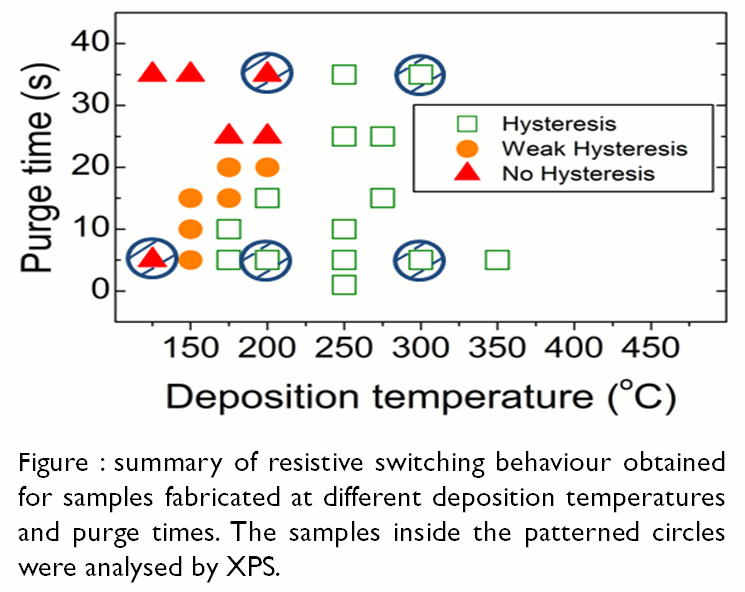"Resistive switching in Hafnium oxide", PhD thesis by Raul Zazpe
Raul Zazpe, Pre-doctoral Researcher at the Nanodevices Group at nanoGUNE, received his PhD at the University of the Basque Country (UPV/EHU) after the defense of his thesis project on Wednesday 30 April 2014. His research work, entitled “Resistive switching in Hafnium oxide”, has been developed under the supervision of the Nanodevices Group Leader and Ikerbasque Research Professor Dr. Luis Hueso.

The thesis work has been framed in the context of the upcoming reach of the CMOS technology physical limits in the near future which has motivated the quest of the so called “universal memory” and the associated development of potential candidates to become such forthcoming computing memory.
This thesis describes the fabrication and ulterior characterization of two types of HfO2-based: metal/oxide/semiconductor (MIS) and metal/oxide/metal (MIM) devices in order to study its potential application as non-volatile memory device. The inherent memory properties are based on the resistive switching phenomenon exhibited by many materials. The physical and electrical characterization of the memory devices is conducted by means of different experimental techniques described in the thesis together with the device fabrication process. The results obtained from morphologic and physical characterization are also reported, as well as the results obtained from the MIS devices and MIM devices respectively.

Moreover, the work also tackles the significant relevance of the metal electrodes on the resistive switching response, the interpretation of the particular non-crossing I-V hysteresis curve as well as the non-volatile memory properties analysis. In particular, the performance of hysteresis switching loops revealed the coexistence of two active interfaces which complementary switches, and whose interplay results in the mentioned non-crossing I-V curve. In addition, the effect of annealing treatments on the physical and electric properties is also described. On the other hand, ALD growing conditions effect on the resistive switching behavior are described together with the X-ray photoelectron spectroscopy analysis that provided a physical correlation between the ALD deposition conditions and the resistive switching behavior. Following, the conduction mechanism is studied which, in conjunction with the previous results, drives to propose a picture for the description of the switching mechanism. Concretely, there were strong evidences suggesting that the switching mechanism was based on local variations in the distribution of oxygen vacancies at the interfacial region driven by electric fields. Eventually, the thesis details the mathematical framework developed that allows to rationalize the whole behavior of our devices and reproduce the experimental I-V curves. This agreement with the experimental results verifies the switching mechanism suggested and permits the understanding of the resistive switching phenomenon observed at our HfO2-based devices.
An international committee including leading researchers in the field was selected by the UPV/EHU to assess the research project:
- Carmen Ocal Garcia (Instituto de Ciencia de Materiales de Barcelona, CSIC, Spain)
- Ivo Nuno Sandanha Souza (Centro de Física de Materiales, CSIC-UPV, Spain)
- Jose Rivas Rey (Universidad de Santiago de Compostela, Spain)
- Francisco Rivadulla Hernandez (Universidad de Santiago de Compostela, Spain)
- Celia Rogero Blanco (Centro de Física de Materiales CSIC-UPV, Spain)
The defense consisted of a presentation by the candidate of the main aspects of the research project followed by a long discussion about the questions that each one of the members of the committee raised around the research works that have been carried out during the whole PhD period. After its final deliberation, the committee decided to award the candidate the Doctor Degree with the highest mention existing at the Spanish University (cum laude).
